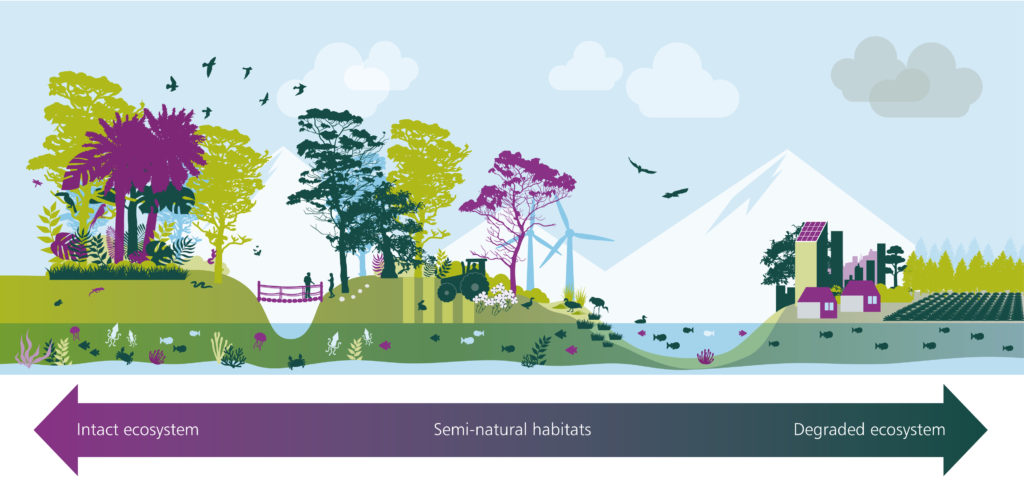Emily McKenzie (2002) is part of the team that supported Professor Sir Partha Dasgupta, Fellow of St John’s College, with his recently published independent global review on the Economics of Biodiversity. Here she shares her experience that led her to work with Professor Dasgupta on the big question in his Review and gives a short synopsis of its findings.
After graduating from Economics at St John’s I entered work with an excellent understanding of economics but little knowledge of how to use it to address environmental problems.
Working as an environmental economist I picked up what I could on the job. I studied dusty volumes on the subject. I went on a conflicted journey with my own discipline as I applied it in practice. I discovered the power of economics to help address acute natural resource issues (deforestation in Tanzania, coastal erosion in the Marshall Islands, blasting of coral reefs in Bermuda). But I also felt growing frustration with how infrequently economics was meaningfully combined with sciences like ecology and hydrology to tackle some of the most important issues the world faces today – biodiversity loss and climate change.

I found a few fantastic ecologists and economists working together to do so in practical ways, and through professional roles they became my colleagues, friends and mentors. But many years after graduating I still sensed a yawning gap, and I became worried about the repercussions for my children’s future.
I was tremendously excited when I heard in 2019 that Professor Sir Partha Dasgupta, Fellow of St John’s College, had been asked by HM Treasury to lead a global, independent review on the Economics of Biodiversity. I had the fortune to take a role supporting Partha with his independent review, as part of a terrific team.
I was thankful to return to St John’s, where my knowledge of economics began, and to work closely with Partha, whose knowledge runs both deep and wide on topics essential to the subject. It felt like the critical next step in my journey was to learn from him while tackling the question that I had wrestled with and that had become so important to me: ‘what does it mean to bring biodiversity to the heart of economics?’

Nearly two years later, on 2 February this year, Professor Dasgupta shared his answer. The Dasgupta Review on the Economics of Biodiversity was published, and a virtual launch event was hosted by the Royal Society.
Professor Dasgupta concludes that, despite the importance of nature to our wellbeing and economies, our demands on nature outstrip its sustainable supply. The Global Footprint Network estimated that in 2020 we required 1.6 Earths to maintain the world’s living standards. The Review explores the underlying causes of this ‘Impact Inequality’ and constructs a comprehensive economic framework, grounded in ecology and earth sciences, to understand the sustainability of humanity’s engagement with nature.

The Review argues that mainstream economics – both theory and practice – has ignored what we know about how ecosystems function, and how they are affected by our economic activities, which in turn depend on those same ecosystems.
In particular, Partha argues that economics now needs to reflect that our economies are embedded within nature, not external to it. The Review sets out options for change for us all to conserve and restore nature, thereby building prosperous, resilient economies and increasing the wellbeing of ourselves and our children.
Access the Dasgupta Review, including the full report, abridged version, headline messages and reactions to the Review.
A paper contributed by another Johnian, James Vause (2001), Lead Economist at the United Nations Environment Programme World Conservation Monitoring Centre (UNEP-WCMC) based in Cambridge, formed the basis of the Review’s chapter on trade. You can read an interview with James on the Review.
The Review has been widely covered by domestic and international media, including The Economist, The New York Times, The Telegraph and The Guardian (on the Review’s findings and recommendations).





